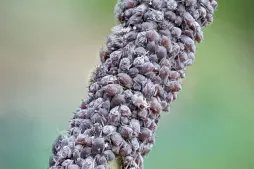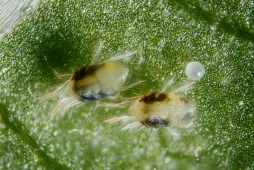Aeschynanthus pulcher: a houseplant with bright red flowers
Aeschynanthus pulcher resembles aeschynanthus radicans in many respects. Both members of the Gesneriaceae family, they share the same nickname, the lipstick plant, and originate from the tropical forests of Southeast Asia. What distinguishes them? A smooth ovary in the pulcher species and a hairy ovary in the radicans species.
How to recognize Aeschynanthus pulcher?
Aeschynanthus pulcher is a creeping perennial herb, mostly epiphytic, sometimes lithophytic. It has a bushy, semi-erect habit andevergreen foliage. It grows up to a metre high and 50 centimetres wide.
Its long stems oscillate between dark purple and green. They bear fleshy, glossy-green leaves with smooth, elliptical or oval margins, arranged in opposite pairs.
The plant bears bright red tubular flowers surrounded at the base by a dark red to brown calyx. The outer surface of the calyx and corolla is covered with short, white hairs. The flowers are vertically oriented and clustered in small groups at the ends of the stems.
The fruit is a pod 20 to 40 centimetres long and two to four millimetres wide. It rarely grows indoors.
Aeschynanthus pulcher is non-toxic to humans and animals. It presents no risk on contact or if ingested.
Our maintenance tips
The plant appreciates light, but fears direct sunlight. Place it behind an east- or west-facing window.
Watering
The substrate must always be kept moist. Water with non-calcareous water at room temperature. You can use rainwater or demineralized water.
Your Aeschynanthus pulcher appreciates abundant watering. The amount of water should correspond to the size of the pot.
After watering, drain off any stagnant water in the saucer. It will rot the roots.
Spray
The air in our apartments is too dry for plants used to high humidity. Mist your Aeschynanthus pulcher with water at room temperature.
Rainwater is preferable to tap water. Tap water causes white spots on the foliage.
Repotting
In spring, transfer your Aeschynanthus pulcher to a larger pot, so that it can continue to grow.
Obtain a pierced pot three to five centimetres larger in diameter than the previous one. Line the bottom with clay balls or pebbles.
Aeschynanthus pulcher appreciate light, well-drained soil. You can use a mixture of heather earth and perlite or a potting soil for flowering plants to which you add sand.
Pour on a layer of substrate and plant your specimen. Fill the pot with your mixture and tamp gently. Water with non-calcareous water at room temperature to encourage rooting.
Place your pot on a dish of moist clay balls to improve humidity.
Fertilization
You can stimulate the development of your plant during its growth phase, in spring and summer, with fertilizer.
Add flowering plant fertilizer to watering water.
Cleaning
Clean the top and bottom of the leaves with a damp sponge. This removes dust and keeps pests at bay.
Prune
Pruning encourages branching and helps maintain a dense growth habit.
After flowering, remove wilted flowers and cut back stem ends. Use pruning shears or scissors to cut back between three and five centimetres. Remember to clean your tool before use to avoid spreading disease!
Cutting
Cutting is carried out during the strong growth phase, generally in spring and early summer.
Obtain a small, pierced pot. Fill it with a mixture of potting soil for flowering plants (about two-thirds) and sand (one-third).
Make a pilot hole with a pick, a pencil or your finger. Plant your Aeschynanthus pulcher cutting.
Keep the soil moist by watering before the surface dries out.
Diseases / Threats
Information
| Family | Gesneriaceae - Gesneriaceae |
| Type | Aeschynanthe - Aeschynanthus |
| Species | Aeschynanthus pulcher - Aeschynanthus pulcher |
| Lifecycle | Perennial |
| Foliage | Evergreen |
| Exposures | |
| Substrat | |
| Planting methods |
In pots In tubs Planter |
| Categories | |
| Tags |
Beginner Flowery Fritillary |
| Origin |
Southeast Asia |
| Hardiness (USDA) | 11b |
| Leaf color |
|
| Flower colors |
|
Discover plants from the same family
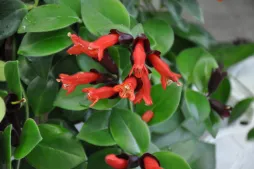
Aeschynanthus 'Mona Lisa'
Discover
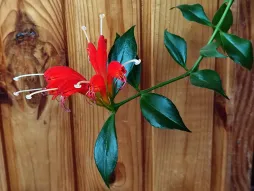
Aeschynanthus speciosus
Discover
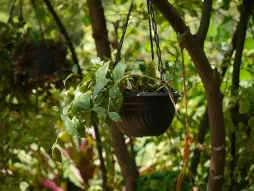
Aeschynanthus longicaulis
Discover
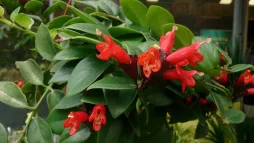
Aeschynanthus radicans
Discover













